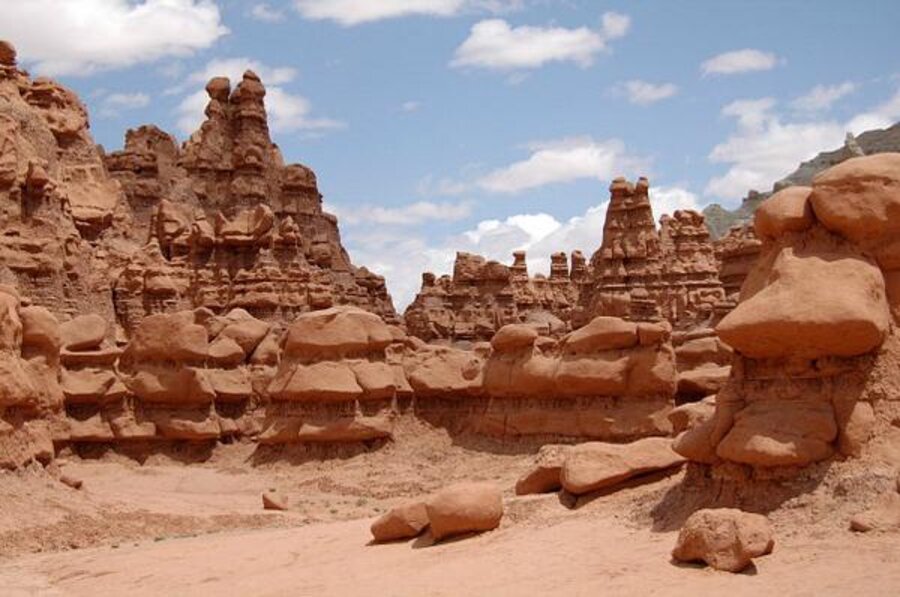In excitement, Utah 'Goblin'-topplers made felonious choice, cops say
Loading...
| ATLANTA
Fair warning, Boy Scouts et al: Don’t topple goblins.
Utah authorities have now charged two former Boy Scout troop leaders – Glenn Taylor and David Hall – with felonious criminal mischief for toppling one of the goblin-like rock formations, or hoodoos, at Utah’s Goblin Valley State Park last fall.
The pair, who were leading a small troop of Boy Scouts on a hike, posted a YouTube video of the toppling, which took place amid whoops and glee as the massive boulder rushed down into a canyon.
The adrenaline rush was short-lived, however, as authorities quickly began investigating the incident, and running through the rule book to see what crime may have been committed. Ironically, the troop was part of the Utah National Parks Council of Boy Scouts.
The men quickly defended their action. “We’ll take responsibility for that,” Mr. Hall told a local TV crew back in October. “We teach our boys to be good scouts. We made a decision based on safety of the people around.”
The issue for them was that the state park, given National Park closures tied to a federal government shutdown, was full of people. The boulder was loose and what the scout leaders considered dangerous. In other words, in a spirit of public safety, they had some fun and maybe saved a life.
Utah park authorities took a grimmer view, as did the Boy Scouts, which later dismissed the men from their posts. It took awhile, however, for Emery County attorney David Blackwell to settle on actual charges, given the lack of a specific statute regarding goblin-toppling.
(On Monday, the state legislature will consider a proposed law making any defacement of a geological or natural feature a third-degree felony.)
"We are taking it seriously," Mr. Blackwell said. "It's been an interesting case, mostly because of the attention it's garnered."
Park rangers said that visitors should keep their hands off natural formations, especially those under state protection. "This is highly, highly inappropriate," Eugene Swalbert, a state park official, told the Salt Lake Tribune.
Once the shoreline of a prehistoric sea, Goblin Valley was discovered by cowboys in the 1920s. The deposits that created the massive sandstone were laid down 170 million years ago, close to the breakup of the supercontinent Pangea in the Mid- to Late-Jurassic Era.
The actual formations, which geologist Mark Milligan calls “wonderfully grotesque,” were formed as the land began to lift about 10 million years ago, long before man emerged.
Goblin Valley received a boost in attendance during the federal government shutdown, a three-week period punctuated by numerous cases of national park gate-jumping as many Americans asserted that they, not the Park Service, were the real owners of the parks, and thus could not be kept out.
The toppling of the Utah goblin, however, reminded a lot of Americans of the necessity of park rangers and law enforcement to patrol the nation’s wild treasures, especially given that the country has witnessed about 9,000 cases of park vandalism since 2009.








